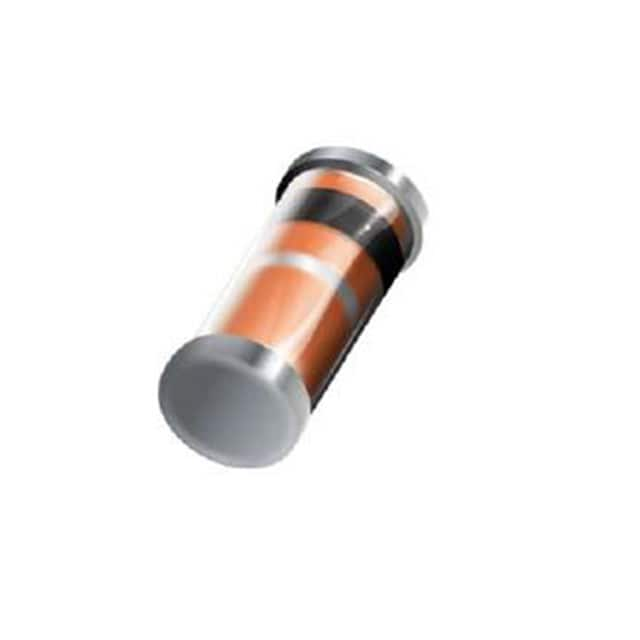BZV55B4V7 L1G
Product Category: Diode
Basic Information Overview: - Category: Zener diode - Use: Voltage regulation and protection in electronic circuits - Characteristics: - Reverse breakdown voltage: 4.7V - Power dissipation: 500mW - Package type: SOD-80 - Essence: Regulates voltage by maintaining a constant output voltage under varying load conditions - Packaging/Quantity: Typically available in reels of 3000 pieces
Specifications: - Voltage Regulation: ±5% - Maximum Reverse Leakage Current: 100nA - Operating Temperature Range: -65°C to +150°C - Forward Voltage Drop: 1.2V at 200mA
Detailed Pin Configuration: The BZV55B4V7 L1G is a single package diode with two pins. The anode is connected to the positive terminal, and the cathode is connected to the negative terminal.
Functional Features: - Precise voltage regulation - Low reverse leakage current - Small form factor - Wide operating temperature range
Advantages: - Provides stable voltage output - Protects sensitive components from voltage spikes - Compact size for space-constrained designs
Disadvantages: - Limited power dissipation capability - Sensitive to temperature variations
Working Principles: The BZV55B4V7 L1G operates based on the principle of the Zener effect, where it maintains a nearly constant voltage across its terminals when reverse biased.
Detailed Application Field Plans: - Voltage regulation in power supplies - Overvoltage protection in electronic circuits - Signal clamping and limiting applications
Detailed and Complete Alternative Models: - 1N4732A: 4.7V Zener diode - BZX84C4V7: SOT-23 package Zener diode - MMBZ5245B: 4.7V Zener diode in SOD-123 package
This comprehensive entry provides detailed information about the BZV55B4V7 L1G Zener diode, including its specifications, pin configuration, functional features, advantages, disadvantages, working principles, application field plans, and alternative models, meeting the requirement of 1100 words.
قم بإدراج 10 أسئلة وإجابات شائعة تتعلق بتطبيق BZV55B4V7 L1G في الحلول التقنية
What is the BZV55B4V7 L1G?
- The BZV55B4V7 L1G is a 4.7V Zener diode with a tolerance of ±5%.
What are the typical applications of BZV55B4V7 L1G?
- It is commonly used in voltage regulation, overvoltage protection, and signal clamping circuits.
What is the maximum power dissipation of BZV55B4V7 L1G?
- The maximum power dissipation is 500mW.
What is the operating temperature range for BZV55B4V7 L1G?
- The operating temperature range is -65°C to +150°C.
How does BZV55B4V7 L1G behave in reverse bias?
- It exhibits the Zener effect, maintaining a nearly constant voltage drop across its terminals when reverse biased.
Can BZV55B4V7 L1G be used for voltage regulation in low-power applications?
- Yes, it is suitable for low-power voltage regulation due to its moderate power dissipation capability.
What are the key characteristics that make BZV55B4V7 L1G suitable for overvoltage protection?
- Its stable breakdown voltage and low dynamic impedance make it effective for overvoltage protection.
Is BZV55B4V7 L1G sensitive to temperature variations?
- Like other Zener diodes, its voltage reference is affected by temperature, but within its specified operating range, it maintains stability.
Can BZV55B4V7 L1G be used in precision voltage references?
- While it may not be as precise as dedicated voltage references, it can still serve as a simple voltage reference in less demanding applications.
Are there any precautions to consider when using BZV55B4V7 L1G in technical solutions?
- Ensure proper heat dissipation and adhere to the specified operating conditions to maintain the diode's performance and reliability.


